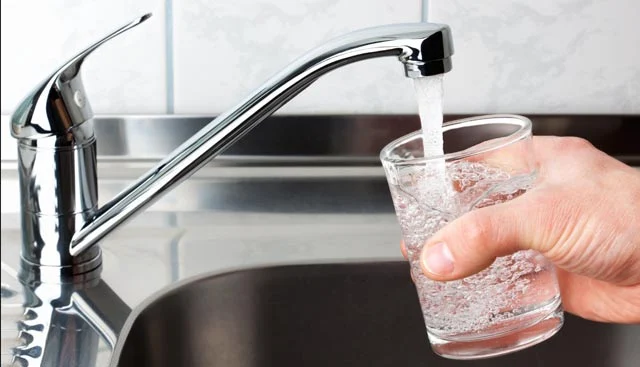Tap water bubbles can be a common and puzzling occurrence in many households. While they might seem harmless, they can sometimes be indicative of underlying issues with your water supply. In this comprehensive guide, we’ll delve into why tap water gets so bubbly, whether it’s safe to drink water with air bubbles, and if these bubbles actually contain oxygen.
Why is My Tap Water So Bubbly?
Water Pressure
One of the primary reasons for the excessive bubbling in tap water is high water pressure. When water rushes through your pipes at a very high speed, it can pick up tiny air bubbles along the way. These bubbles then get released when the water flows out of your faucet, creating the characteristic fizziness.
Temperature Changes
Temperature fluctuations can also contribute to the bubbling of tap water. When water is cold, it can hold more dissolved gases, including oxygen and nitrogen. If the temperature of the water changes as it flows through your plumbing, it can release some of these gases as bubbles when you turn on the tap.
Air Leaks
Another possibility is air leaks in your plumbing system. Tiny cracks or loose connections in your pipes can allow air to enter the water supply. When this air reaches your faucet, it can create bubbles as it escapes.
Is It OK to Drink Water with Air Bubbles?
Safety
In most cases, drinking water with air bubbles is perfectly safe. The air that causes these bubbles is typically just atmospheric air and doesn’t pose any health risks. However, if you notice a sudden and significant increase in bubbles, it might be a sign of a more serious issue, such as a leak in your plumbing system. In such cases, it’s a good idea to have your water tested for contaminants.
Taste and Aesthetics
While air bubbles themselves are harmless, they can affect the taste and appearance of your water. Some people find that excessively bubbly water can taste slightly different due to the increased aeration. Additionally, the presence of bubbles can make the water look cloudy or less clear. If these aesthetic factors bother you, you can try to reduce the bubbles using the methods outlined below.
Do Bubbles in Water Mean Oxygen?
The Relationship Between Bubbles and Oxygen
Yes, bubbles in water can indeed contain oxygen. When water is exposed to air, it can absorb some of the oxygen present in the atmosphere. This dissolved oxygen is crucial for the survival of aquatic life, like fish and other aquatic organisms. However, the oxygen in the bubbles you see in tap water is not typically in a concentration that would significantly impact its oxygen content or benefit your health.
Oxygenation Methods
If you’re interested in increasing the oxygen content of your tap water for specific purposes, such as for aquariums or hydroponic systems, there are specialized devices and methods for oxygenation. However, these are not related to the air bubbles you see when you turn on your tap.
How to Reduce Tap Water Bubbles
If you find the excess bubbles in your tap water bothersome, here are some steps you can take to reduce them:
1. Reduce Water Pressure: High water pressure can exacerbate bubbling. Consider installing a pressure regulator to lower the pressure in your plumbing system.
2. Aerate the Water: Letting the water sit in an open container for a while can help dissipate some of the bubbles. This is especially useful if you plan to use the water for cooking or drinking.
3. Check for Leaks: Inspect your plumbing system for any signs of leaks or loose connections. Addressing these issues can prevent excess air from entering your water supply.
4. Install a Water Softener: If your water is naturally hard, it can create more bubbles due to the higher mineral content. Installing a water softener can help reduce the hardness of your water.
5. Use a Water Filter: Sometimes, impurities in the water can contribute to excessive bubbling. A water filter can help remove these impurities.
FAQs
Q1. Why does my tap water sometimes look milky or cloudy?
- A: Cloudy tap water is usually caused by tiny air bubbles or particles in the water. It’s typically not harmful and can clear up if you let the water sit for a few minutes.
Q2. Can the bubbles in tap water affect the performance of my appliances, like my coffee maker or dishwasher?
- A: Excessive bubbles can create foaming issues in appliances. If you notice this problem, using a water filter or allowing the water to sit before use can help.
Q3. Are there any health concerns associated with drinking bubbly tap water?
- A: Generally, no. The bubbles are usually just air. However, if you suspect a problem with your water quality, it’s advisable to have your water tested.
Conclusion
Tap water bubbles are a common occurrence caused by factors like high water pressure, temperature changes, and air leaks in your plumbing system. While they are usually harmless, they can affect the taste and appearance of your water. If you’re concerned about the quality of your water, consider having it tested, and take steps to address any underlying issues. Remember that, in most cases, the bubbles in your tap water are not a cause for alarm.
Sources:
- Water Quality Association
- U.S. Environmental Protection Agency – Drinking Water Standards
- American Water Works Association
Remember that if you have specific concerns about your tap water quality, it’s always a good idea to consult with your local water utility or a certified water quality professional.

